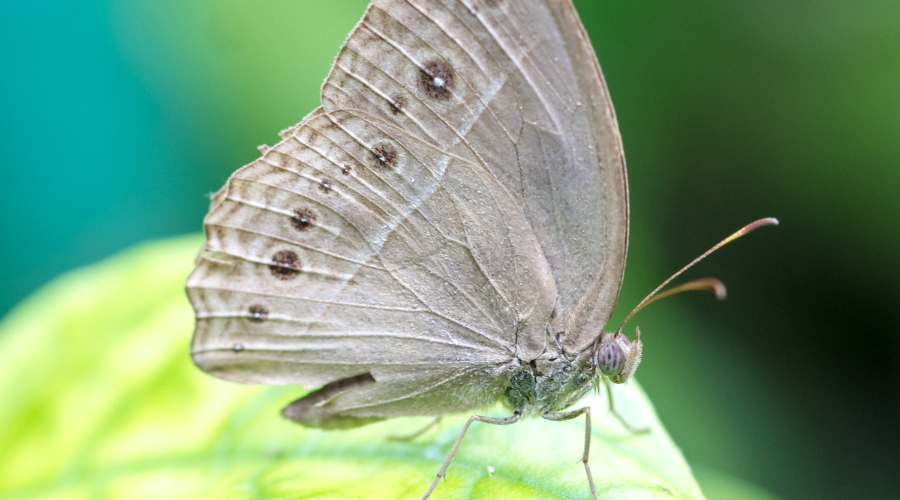Butterfly farming is a unique, rewarding, and increasingly popular venture that combines the love of nature with conservation, education and recreation.
Whether you’re looking to create a serene sanctuary for yourself and your community, contribute to the conservation of native butterfly species or establish an educational center then starting a butterfly farm is an excellent way to achieve these goals.
This comprehensive guide will provide you with the essential steps to establish a successful butterfly farm regardless of your level of experience.
Planning Your Butterfly Farm
Identifying Your Goals and Objectives
Before embarking on your butterfly farming journey, it’s essential to identify your primary goals and objectives. These may include:
- Conservation efforts: Butterfly farms contribute significantly to the conservation of native butterfly species by providing safe habitats and breeding grounds. They also help raise public awareness about the importance of butterflies in maintaining healthy ecosystems.
- Educational programs: Butterfly farms offer excellent opportunities for educating people about the life cycles of butterflies, the importance of pollinators, and the need for habitat preservation.
- Recreation and enjoyment: Butterfly farms create peaceful environments where visitors can enjoy the beauty of butterflies in flight and connect with nature.
Choosing the Right Location
To establish a thriving butterfly farm, selecting an appropriate location is crucial. Consider the following factors:
- Climate considerations: Butterflies thrive in warm climates, so ensure your chosen location has a suitable climate for the butterfly species you wish to raise.
- Accessibility: Your butterfly farm should be easily accessible to visitors, preferably close to schools, parks, or other recreational areas.
- Space requirements: Depending on your objectives, ensure you have enough space to accommodate butterfly enclosures, gardens, walking paths, and visitor amenities.
Legal Requirements and Permits
Compliance with local and national regulations is essential to avoid legal issues. Make sure you:
Research local and national regulations related to butterfly farming and wildlife conservation.
Obtain necessary permits, such as zoning permits and environmental clearances, to establish your butterfly farm.
Ensure ongoing compliance with relevant laws and regulations.
Designing Your Butterfly Farm
Creating the Ideal Habitat
Designing a suitable habitat for your butterflies is crucial for their survival and well-being. Consider the following aspects:
- Plant selection for host and nectar plants: Research the host and nectar plants preferred by the butterfly species you plan to raise. Native plants are generally the best choice for supporting local butterfly populations.
- Designing a layout for optimal growth and viewing: Arrange plants in a manner that facilitates butterfly growth, reproduction, and feeding while allowing visitors to observe butterflies up close.
- Incorporating water sources and shelter: Butterflies require shallow water sources, such as puddling stations, to drink and obtain minerals. Providing shelter, such as shrubs and trees, is essential for protection from predators and harsh weather conditions.
Enclosures and Structures
Constructing appropriate enclosures and structures is vital to maintain healthy butterfly populations. Keep the following factors in mind:
- Types of butterfly enclosures: Choose an enclosure design suitable for your butterfly species and climate. Common options include open gardens, screened enclosures, and greenhouse-like structures.
- Materials and construction: Use durable materials like wood, metal, and UV-resistant mesh or glass for your enclosures. Ensure the enclosures are sturdy, well-ventilated, and allow sufficient sunlight.
- Ventilation and temperature control: Proper ventilation and temperature control are crucial for maintaining optimal conditions within enclosures. Consider installing fans, vents, or shade cloth as needed to regulate temperature and airflow.
Accessibility and Visitor Amenities
To ensure an enjoyable and educational experience for visitors, consider the following amenities:
- Pathways and signage: Create accessible pathways throughout your butterfly farm, ensuring they are wide enough for wheelchairs and strollers. Install informative signs to guide visitors and educate them about the butterfly species and plants on display.
- Seating and viewing areas: Provide comfortable seating areas where visitors can relax and enjoy the beauty of your butterfly farm. Designate specific viewing areas near key attractions, such as popular host plants or butterfly feeding stations.
- Educational displays and facilities: Set up informative displays, interactive exhibits, and educational facilities to engage visitors and help them learn about butterfly conservation, life cycles, and the importance of pollinators.
Rearing and Managing Butterfly Populations
Selecting Butterfly Species
Choose butterfly species that align with your goals and suit your location. Consider the following:
- Native species for conservation: Prioritize native butterfly species to support local ecosystems and contribute to conservation efforts.
- Species suitable for your climate: Research the climate requirements of different butterfly species to ensure they can thrive in your area.
- Availability and sourcing: Source butterflies and their host plants from reputable suppliers to ensure healthy populations and sustainable practices.
Breeding and Rearing
Successful breeding and rearing are key to maintaining a thriving butterfly population. Keep the following in mind:
- Egg-laying sites: Provide suitable egg-laying sites, such as host plants or artificial substrates, to encourage reproduction.
- Caterpillar care and feeding: Monitor caterpillars closely and provide ample food from their preferred host plants. Ensure their enclosures are clean and well-maintained.
- Pupation and emergence: Provide safe pupation sites, such as branches or mesh screens, for caterpillars to form chrysalises. Monitor chrysalises and ensure a safe environment for emerging butterflies.
Monitoring and Maintaining Butterfly Populations
Regular monitoring and maintenance are essential for ensuring the health and well-being of your butterflies. Consider the following:
- Disease and pest control: Implement a disease and pest management plan to protect your butterflies and plants. Use organic methods whenever possible to minimize harm to butterflies and their environment.
- Environmental conditions: Regularly monitor and adjust environmental conditions, such as temperature, humidity, and ventilation, to maintain optimal conditions within enclosures.
- Record-keeping and data collection: Keep detailed records of your butterfly populations, including species, numbers, breeding success, and any observed issues. This data will help you track your progress and make informed decisions for managing your butterfly farm.
Marketing and Promotion
Attracting visitors and raising awareness about your butterfly farm are essential for its success. Develop a marketing and promotion strategy that includes the following elements:
Identifying Target Audiences
Identify the groups most likely to visit and support your butterfly farm, such as:
- Schools and educational institutions: Offer educational programs and field trip opportunities to attract students and teachers.
- Tourists and local visitors: Promote your butterfly farm as a unique and beautiful destination for nature enthusiasts and families.
- Conservation groups: Collaborate with local and national conservation organizations to support your conservation efforts and attract like-minded visitors.
Developing Promotional Materials
Create eye-catching and informative promotional materials to showcase your butterfly farm:
- Brochures and flyers: Design attractive print materials featuring images of your butterfly farm, a description of its offerings, and contact information.
- Website and social media presence: Develop a user-friendly website and maintain an active presence on social media platforms to share updates, events, and engaging content related to your butterfly farm.
- Media outreach: Connect with local media outlets, such as newspapers, radio stations, and television stations, to share your story and promote your butterfly farm.
Hosting Events and Workshops
Organize events and workshops to engage your audience and showcase your butterfly farm:
- Guided tours and educational programs: Offer guided tours led by knowledgeable staff or volunteers to educate visitors about butterfly life cycles, conservation, and the importance of pollinators.
- Workshops on butterfly gardening and conservation: Host workshops that teach attendees how to create butterfly-friendly gardens or support butterfly conservation efforts in their local communities.
- Special events and collaborations: Partner with local organizations, such as schools, conservation groups, or gardening clubs, to host joint events that promote your butterfly farm and raise awareness about the importance of butterflies and their habitats.
Conclusion
Starting a butterfly farm is a unique and rewarding endeavor that combines conservation, education, and recreation.








